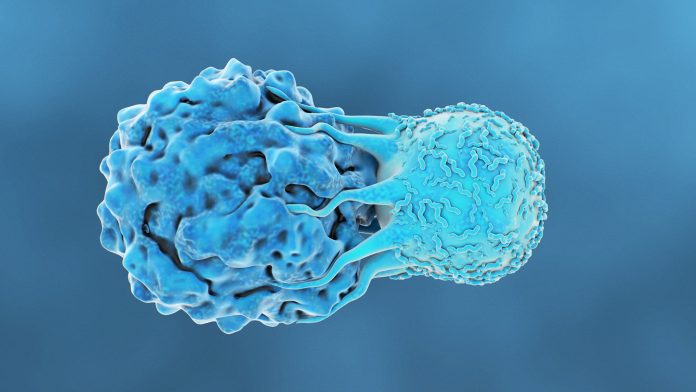
A team of researchers has made a potentially groundbreaking discovery in cancer treatment, identifying that stem-like T cells may be proficient in fighting against the disease.
The study, carried out by researchers at the Yale Cancer Centre, has ascertained that stem-like T cells, which are located within specific lymph nodes, display characteristics that may make them proficient at naturally fighting cancer. The team found that the cells may provide an efficient method of fighting against cancer when employed in unison with immunotherapy.
The findings of the study are published in the journal Science Immunology.
What are T cells?
T cells are a type of white blood cell – also known as T lymphocyte – a crucial part of the immune system that determines the specifications of immune response to antigens in the body. They are known to fight against viruses and diseases that enter the body and, now, potentially even cancer. The Yale team has discovered that targeting these cells with immunotherapy drugs could enhance cancer patients’ response to the treatment, increasing their chances of defeating the deadly disease.
Nikhil Joshi, PhD, Assistant Professor of Immunobiology, a member of the Center of Immuno-Oncology at Yale Cancer Center, and senior author of the study, said: “Therapies that use the immune system to destroy cancer have been a game-changer for patients with lung and other cancers. But not all people respond to immunotherapy drugs, so it was important for us to discover the role of these special T cells in tumour growth.”
Cells that combat cancer
To examine their hypothesis, the researchers produced a novel animal model in which they were able to observe the stem-like T cells in tumours throughout several months of tumour growth, examining how cells survive. The experts identified that the stem-like T cells do not persist in the tumour for very long, indicating that they are resupplied from somewhere else in the body.
Nearby lymph nodes, which are an immune organ comprised of many T cells, were actually replenishing the supply, with the cells intermittently leaving the nodes to travel to the tumour. This meant that the tumour was being bombarded with the cells, which the researchers believe is what helped to mitigate the growth of cancer. Subsequent analysis of lung cancer patients’ immune cells revealed that the cells are present in lymph nodes near the lung.
Kelli A Connolly, a post-doctoral fellow at Yale Cancer Center and lead author of the study, said: “T cells in tumours become exhausted, but our study results show the stem-like T cells within the nearby lymph nodes do not experience exhaustion during the course of the disease. This could be an important treatment advance as the potential to respond to immunotherapy is preserved.”
“We are focused on developing therapies that will activate the stem-like T cells in the nearby lymph node and bring them into the fight against cancer,” commented Joshi. “We plan to continue this work and focus on how to improve these therapeutic responses to help patients.”







